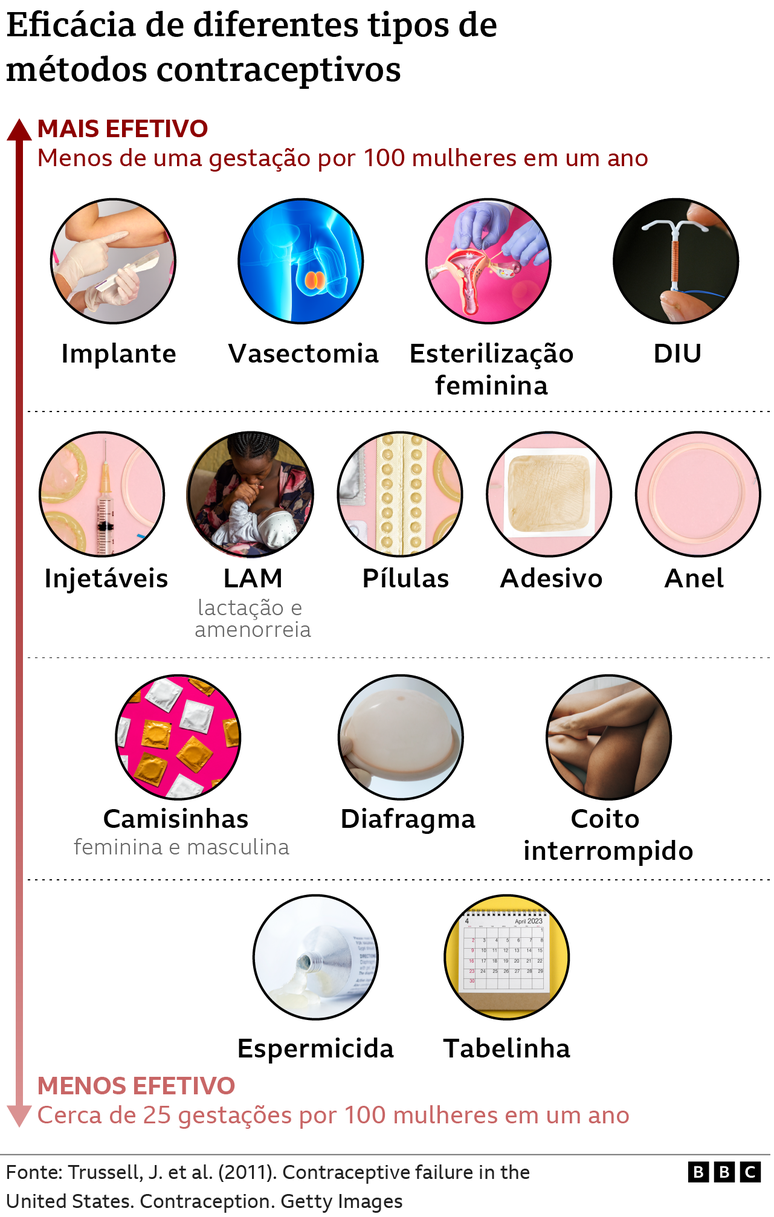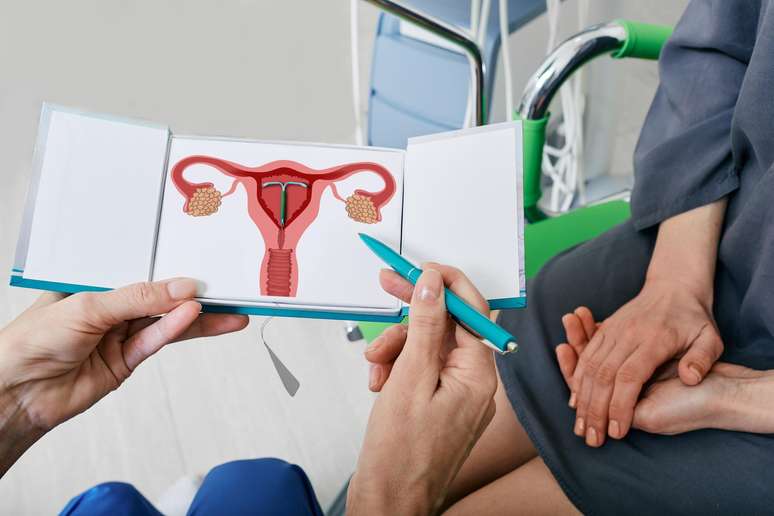Experts point out that photos or news of women who became pregnant with an IUD usually attract attention, precisely because of the rarity of these events, and do not represent a lack of effectiveness of the method.
html[data-range=”xlarge”] figure image img.img-7d712217842ab261b040bc6c0684b5d484aeabs6 { width: 774px; height: 435px; }HTML[data-range=”large”] figure image img.img-7d712217842ab261b040bc6c0684b5d484aeabs6 { width: 548px; height: 308px; }HTML[data-range=”small”] figure image img.img-7d712217842ab261b040bc6c0684b5d484aeabs6, html[data-range=”medium”] figure image img.img-7d712217842ab261b040bc6c0684b5d484aeabs6 { width: 564px; height: 317px; }HTML[data-range=”small”] .article__image-embed, html[data-range=”medium”] .article__image-embed { width: 564px; margin: auto 0 30px; }
Easily found on the Internet, photos of newborns with tiny fingers intertwined in the IUD can give the impression that contraception often fails.
The idea that a newborn can overcome contraception and reach out to the world holding it as a trophy is hardly feasible.
The reality, experts point out, is that intrauterine devices, whether copper or hormonal, are among the most reliable methods of preventing unplanned pregnancies.
Both types are indicated by studies as methods with protection rates above 99%, something that is comparable to surgical procedures, such as tubal ligation for women or vasectomy for men.
According to doctors interviewed by BBC News Brasil, photos or news stories of women who became pregnant with IUDs tend to attract attention precisely because of the rarity of these events.
“While the probability of pregnancy associated with this method does not reach one in 100 women per year, the pill, for example, presents a probability of nine women in 100. Pregnancies, even with the use of the pill, are usually not surprising, but a child born to a woman who has used an IUD, since it is very rare, usually arouses interest”, evaluates Helga Marquesini, gynecologist at the Sírio Libanês hospital.
In clinical studies, both contraceptive methods (and others such as injections and patches) show good efficacy. But in practice, the failure rates of fast-acting methods can vary widely, as you have to remember to use them correctly.
With the “ideal” use of the combined progestogen pill, for example, the risk of becoming pregnant is 0.3%. However, the number rises to 8% in so-called ‘typical’ use, where women eventually forget to take the medicine or end up taking it at different times.
As a result, long-acting contraceptives like the IUD are up to 20 times more effective at preventing pregnancy, according to data from Febrasgo (Brazilian Federation of Gynecology and Obstetrics Associations).

In the rare cases that the IUD actually fails, it’s usually because it’s out of place, explains the doctor.
“If the IUD moves and is placed too low in the uterus, it could increase the possibility of contraceptive failure. ultrasound, at least once a year,” explains gynecologist Ilza Monteiro, vice president of the National Contraceptive Commission of Febrasgo.

Because a child is “born with the IUD” is extremely unlikely
During fetal development, the baby is surrounded by the amniotic sac, a structure that isolates it from the rest of the uterus and provides protection. At the same time, the IUD remains in the uterine cavity, without having direct contact with the developing baby.
“Even if the membrane ruptures, the child would have to go get the IUD, which we know doesn’t happen. These photos are fabricated and the method ends up being vilified because of it.”
Also, the birth process involves the baby passing through the birth canal as the uterus contracts to expel the baby. According to experts, the IUD is extremely unlikely to have been expelled with the baby, let alone in his tiny hand.
In the rare instances where the IUD fails and pregnancy occurs with the device present, the medical team should consider whether the IUD can be removed.
“When we remove the IUD under favorable conditions, we manage to mitigate the main risks, which include infection in the amniotic sac, miscarriage, placental abruption, bleeding during pregnancy and premature birth,” explains Helga Marquesini.
“However, it is important to point out that, sadly, the data indicate that even after IUD removal, we have not been able to reduce these complications to levels equivalent to those of women who became pregnant without the use of an IUD. Therefore , the rate of these complications will remain slightly elevated following removal, although device removal significantly helps reduce these risks.”
IUD: what it is and how it works in the body
The IUD is a “T” shaped device that is inserted through the cervix into the uterine cavity to prevent conception.
The hormonal version and the copper version of the IUD have different mechanisms of action, but both share the same ultimate mission: to prevent sperm from meeting the ova.
In the case of the copper IUD, the object, being a foreign body inside the uterus, causes an inflammatory reaction which makes the spermatozoa slower or even inactive, preventing their progression towards the fallopian tubes and meeting the ovum.
Hormonal devices contain levonorgestrel, a type of progesterone similar to that found naturally in the second phase of the menstrual cycle.
Its action is to create a thick, dense plug, making it difficult for sperm to pass from the vagina to the uterus and fallopian tubes.

Most women can use an IUD, but it is not recommended in some situations. Contraindications include cases of uterine problems, recent pelvic infections, unexplained vaginal bleeding, pregnancy or copper allergy (in the case of the version of the device made with this material).
Some specific contraindications also apply to hormone-releasing types of IUDs, such as a family history of hormone-dependent cancers, such as hormone-positive breast cancer and ovarian cancer.
The copper IUD is usually cheaper, offered by the SUS, and lasts longer (10 years, whereas the hormonal one lasts 5 years), but it can also increase cramping and menstrual bleeding — symptoms that the hormonal IUD relieves, according to the experts.
«If there aren’t these contraindications, it becomes a female choice. It is especially interesting for young women, who tend to forget to take the pill more often, or for those who have a very hectic routine», says Marquesini.
Despite the high protection against pregnancy, it should be remembered that IUDs do not protect against sexually transmitted infections, and therefore, even with the contraceptive method, the use of condoms is essential.
“It is necessary to break the idea that, with the IUD, the woman is completely protected. In recent years, I have observed an increase in women contracting STIs (sexually transmitted infections) — including pregnant women. Also, for those who want avoid pregnancy, the condom is an extra layer”, points out the gynecologist Ilza Monteiro.
IUD does not harm the fertility of those who want to get pregnant in the future
Both copper and hormonal IUDs have no permanent effects on fertility, according to experts.
Once removed, the IUD ceases to exert its contraceptive effect, the body returns to normal functioning of the menstrual cycle and ovulation, allowing conception to occur when the desired time occurs.
Studies have shown no differences in pregnancy rates after 1 year between former users of the device, implants, other contraceptives, or non-users.
In a scientific review evaluating 17 different studies, the median time to pregnancy was 2 to 4 months after use of pills or IUDs and 2 to 7 months after use of implants.
Source: Terra
Ben Stock is a lifestyle journalist and author at Gossipify. He writes about topics such as health, wellness, travel, food and home decor. He provides practical advice and inspiration to improve well-being, keeps readers up to date with latest lifestyle news and trends, known for his engaging writing style, in-depth analysis and unique perspectives.









